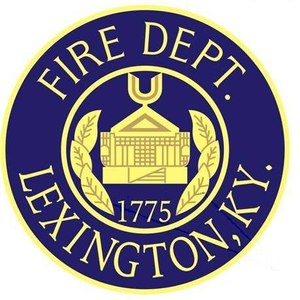
Lexington's team has added staffers and expanded to include rapid responses to overdose deaths
Beth Musgrave
Lexington Herald-Leader
LEXINGTON, Ky. — One man called 911 more than 30 times in one month.
The issue?
He had repeatedly fallen and called Lexington Fire Department ambulance crews to help get him up.
A homeless woman would often call 911 when it was cold and asked to be taken to the emergency room. She was not sick but did not want to go to a homeless shelter because she had a dog that did not have all of its immunizations.
Thanks to the Lexington Fire Department's community paramedicine program, the department was able to get the man a lift device so he wouldn't have to rely on ambulance crews to help him up. The program found a veterinarian who was willing to give the woman's service dog immunizations so she could stay in a shelter.
The two examples are some of the early successes of the program, which was started in 2018 with the help of a federal grant. Community paramedicine dispatches paramedics but not ambulances to patients who frequently call 911 but don't need emergency care. In 2019, the community paramedicine program was expanded to include rapid response to overdose deaths by sending teams to visit people who have overdosed and been revived with naloxone, commonly known by its brand name Narcan.
Other communities across the country, including Fort Worth, Texas, have similar programs. The model is designed to save taxpayer money and valuable emergency management resources by addressing medical and other issues with less costly care than an ambulance trip or a trip to the emergency room.
On average, the program has decreased ambulance calls by about 6.7 percent since the program began in 2018. Prior to the start of the program, ambulance call volume was increasing on average by 8 to 9 percent a year. In 2017, prior to the full implementation of the program, the city spent nearly $500,000 to staff a 12th ambulance due to the steep increase in the number of people dialing 911.
The program's funding has been in peril in the past due to cuts to the city's budget. In 2019, UK HealthCare, CHI Saint Joseph Health and Baptist Health Lexington donated $200,000 to keep the community paramedicine program going for an additional year. It received more city money in this year's budget. It also receives a host of federal and state grants to deal with overdose response.
It originally started with a two-man team, Capt. Seth Lockard and Firefighter Patrick Branam. It has since been expanded to include two social workers, Maria Slone and Mackenzie Gross, and a third firefighter, Ken Powell.
Lexington Police Department also has had a person on the team since 2018. Lexington Police Detective Kristie Smith is currently the police department's representative on the team.
Smith helps advocate for people the program serves. Many are elderly. Some are disabled and are vulnerable adults, Smith said.
Slone, Gross and Powell are paid for through federal and state grants to address opioid overdoses. The goal of the rapid response team is to meet with people who have overdosed and have been revived within 24 to 48 hours.
In calendar year 2020, the latest year that complete data is available, the community paramedicine program served 300 unique individuals and were called to visit more than 1,200 people who suffered from overdoses
In 2020, the department received 300 referrals from the Lexington Police Department and more than 100 from area hospitals. It also receives referrals from social service agencies and nonprofits.
___
(c)2022 the Lexington Herald-Leader
McClatchy-Tribune News Service
Copyright © 2025 EmsGrantsHelp.com. All rights reserved.
